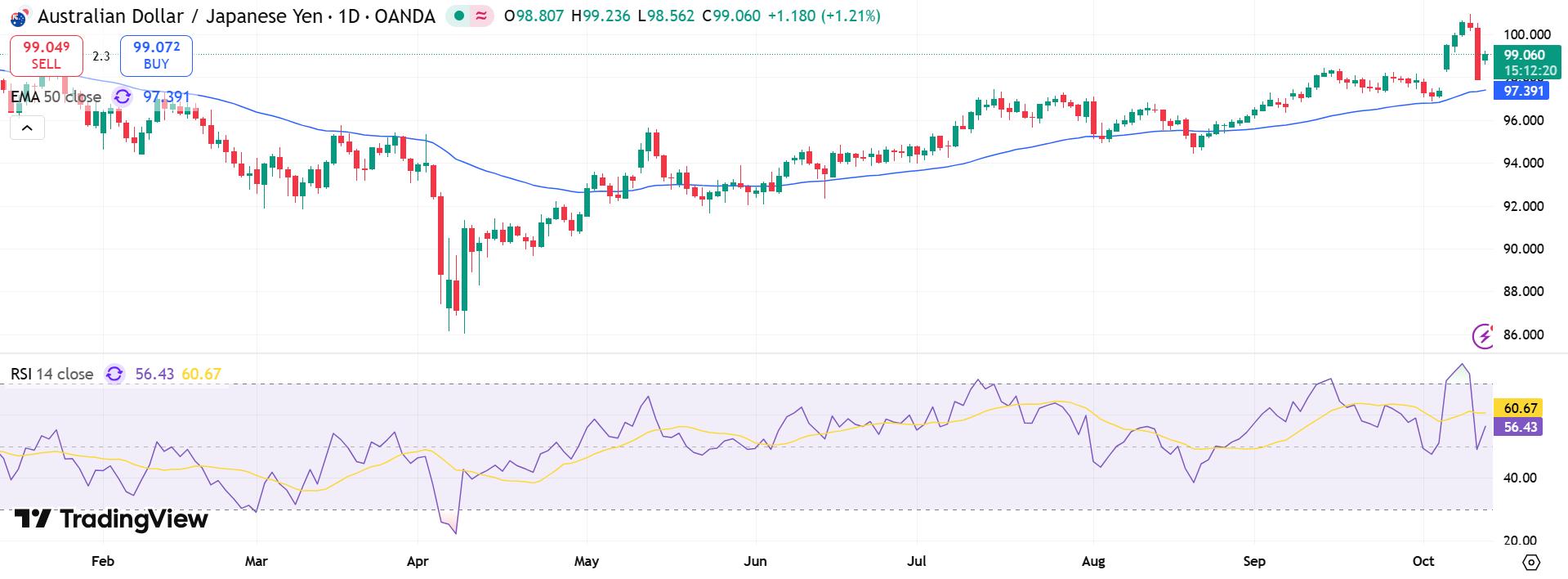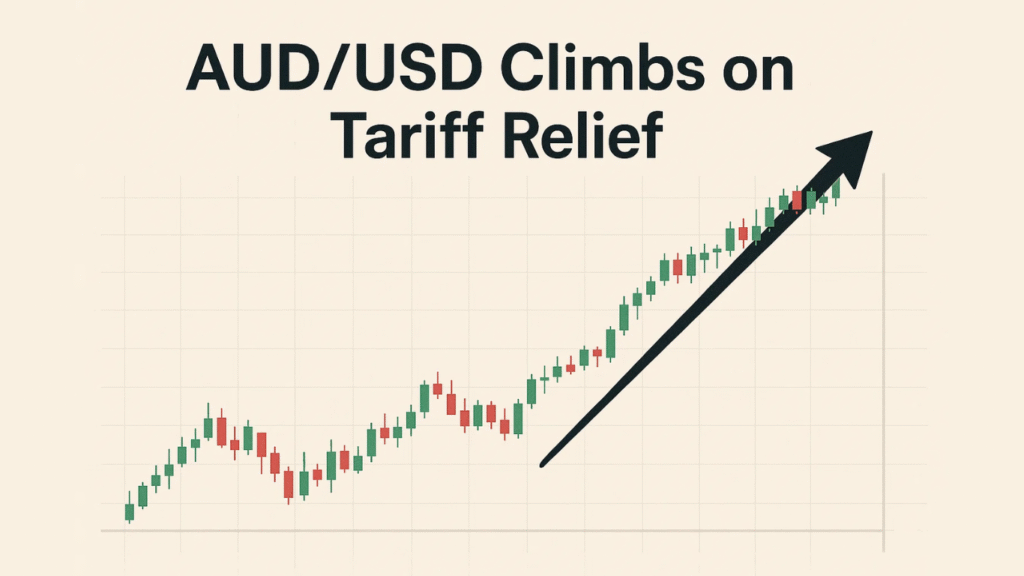The Australian Dollar–Japanese Yen (AUD/JPY) pair advanced sharply on Monday, climbing back above 99.00 after recovering from Friday’s steep 250-pip drop to the 97.80 level. The rebound followed easing concerns over U.S.–China trade tensions and growing optimism in global markets, boosting appetite for risk-sensitive currencies like the Aussie.
During the Asian session, the pair traded firmly in positive territory, consolidating after last week’s slide from the 101.00 region—its highest level since November 2024. Traders viewed President Donald Trump’s backtrack on proposed 100% tariffs against Chinese imports as a key catalyst for the turnaround.
On Truth Social, Trump wrote that the U.S. “does not wish to hurt China”, signaling a softer stance that eased investor concerns over a renewed trade war between the world’s two largest economies. The remarks revived global risk appetite, weighed on the safe-haven yen, and lifted the China-sensitive Australian dollar.
Japan’s Political Turmoil Pressures Yen
Adding to yen weakness, Japan’s political uncertainty is intensifying. The Komeito Party’s decision to end its 26-year coalition with the ruling Liberal Democratic Party (LDP) has cast doubt over Sanae Takaichi’s leadership prospects as she vies to become Japan’s first female prime minister.
The political fallout threatens to delay the Bank of Japan’s (BoJ) long-awaited rate hike, already facing challenges amid fragile domestic growth and subdued inflation. The instability has undermined the yen’s safe-haven appeal, giving additional momentum to the AUD/JPY cross.
Market factors driving yen weakness:
- Political fractures within Japan’s ruling coalition
- Uncertainty over BoJ’s rate-hike timeline
- Shift toward risk assets following trade détente
These developments have pushed traders toward higher-yielding assets, with the Australian dollar benefiting most among G10 currencies.
RBA Hawkish Outlook Supports the Aussie

The Reserve Bank of Australia (RBA) has added another tailwind to the AUD, maintaining a hawkish tone in its latest communication. The central bank signaled that September-quarter inflation may exceed prior forecasts and emphasized the need for more time to assess the impact of 75 basis points of rate cuts implemented in 2025.
The RBA’s cautious optimism strengthens expectations that it will hold rates steady in the near term, reinforcing the Aussie’s relative yield advantage over the yen. Meanwhile, China’s latest trade data, which showed a narrowing CNY 645.47 billion surplus and stronger import growth of 7.5% year over year, failed to dent sentiment, underscoring broad market resilience.
Technically, the AUD/JPY pair faces initial resistance at 99.30, followed by 101.00, while strong support lies near 98.20 and 97.80. As long as the BoJ remains sidelined and global risk appetite improves, analysts expect further upside in the cross heading into the fourth quarter.


